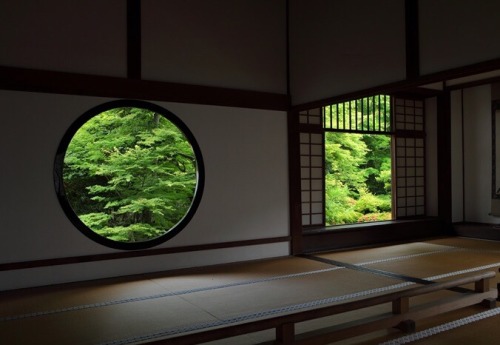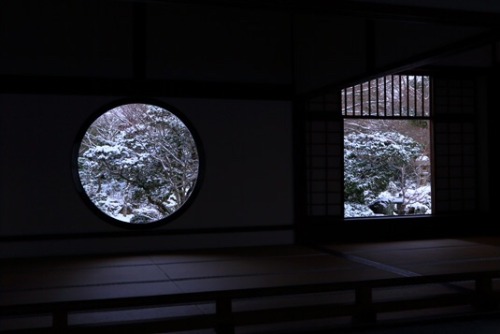Blue Surface With White Fog By Takay Via Flickr: And Autumn Colors. Matsudai,Niigata,japan.
blue surface with white fog by takay Via Flickr: and autumn colors. Matsudai,Niigata,japan.
More Posts from Earthquakedeer and Others
Japanese Vocabulary : Using your phone in Japanese
[FRENCH BELOW]
This list is not complete, I will update it from time to time when I can ! Please note that I’m using a Samsung Galaxy S7 and there might be slight differences depending on the phone you have.
I will not put the terms written in katakana, as 1) you should know them 2) their meaning is usally easy to guess since most of the time they’re english words.
PS : If you’re learning French, note that there are quite a few words / expressions that are abbreviated !
PS2 : Also note that I put my phone back in English and French to get the best translations, but some words are “computer terms” so please check before using them in another context :)
I hope this will be useful :)
Cette liste n’est pas complète, je la mettrai à jour quand je pourrai! Prenez en compte le fait que j’utilise un Samsung Galaxy S7, donc il se peut qu’il y ait quelques différences avec d’autres téléphones.
Je ne mettrai pas les termes écrits en katakana : 1) vous devriez les connaître 2) si vous comprenez l’anglais leur sens est normalement simple à trouver, sinon il suffit d’aller chercher la signification (ce qui est bien plus facile que de chercher des kanjis qu’on ne connait pas…)
PS : J’ai remis mon téléphone en anglais et en français pour avoir la meilleure traduction, mais faîtes attention car certains mots sont des termes réservés à l’électronique et pourraient ne pas fonctionner dans un autre contexte !
ロックを解除(かいじょ)するには、スワイプしてください : Swipe screen to unlock / Faîtes glisser votre doigt sur l’écran pour déverrouiller.
機内(きない)モード : Airplane mode / Mode hors-ligne
省電力(しょうでんりょく) : Power saving / Eco. énergie
縦画面(たてがめん) : Portrait / Portrait
自動回転(じどうかいてん) : Auto rotate / Rotation auto.
位置情報(いちじょうほう) : Location / Position
全(すべ)て消去(しょうきょ) : Clear all / Effac. tout
通知設定(つうちせってい) : Notification setting / Param. notif.
電卓 (でんたく) : Calculator / Calculatrice
翻訳 (ほんやく) Translate / Traduction
連絡先 (れんらくさき) Contacts / Contacts
時計 (とけい) Clock / Horloge
電話 (でんわ) Phone / Téléphone
予約 (よやく) Schedule (a message) / Programmer (un message)
削除 (さくじょ) Delete / Supprimer
画像 (がぞう) Pictures / Photos
検索 (けんさく) Search / Rechercher
編集(へんしゅう) Edit / Modifier
全てを朗読(ろうどく)にする Mark all as read / Tout marquer comme lu
保護(ほご)メッセージ Locked messages / Messages verrouillés
お問(と)い合(あ)わせ Contact us / Nous contacter
履歴(りれき) Recents / Récents
作成(さくせい) Compose / Rédiger
番号 (ばんごう) Number / Numéro
入力 (にゅうりょく) Enter (a text) / Rédiger
共有 (きゅうゆう) Share / Partager
追加 (ついか) Add / Ajouter
非表示 (ひひょうじ) Hide / Masquer
貼(は)り付(つ)け Paste / Coller
作 (さく) Notes / Notes (Tumblr, Instagram…)
保存 (ほぞん) Save / Enregistrer



Genko-an Temple (Kyoto,JAPAN)
Summer/Fall/Winter

pronunciation | tsUn-dO-kU (tsoon-doh-koo) submitted by | chrysalismm submit words | here Japanese script | 積ん読 kanji, つんどく hiragana
Tenmonkan by Keita Kuroki
血も涙もない
血も涙もない (ちもなみだもない) - heartless, unfeeling, cold-blooded. Literally “having no blood and no tears”.
Japanese Vocabulary
The main topic is common adjectives (12/4/16):
新しい - あたらしい - Atarashii
古い - ふるい - Furui
厚い - あつい - Atsui (Thick, used for nouns besides weather)
薄い - うすい - Usui (Thin)
暑い - あつい - Atsui (Hot, used for weather or temperature)
寒い - さむい - Samui (Cold, used for weather or temperature)
暖かい - あたたかい - Atatakai (Warm, used for weather)
涼しい - すずしい - Suzushii (Cool, used for weather)
大きい - おおきい - Ooki (Big)
小さい - ちいさい - Chisai (Small)
重い - おもい - Omoi (Heavy)
広い - ひろい - Hiroi (Wide)
狭い - せまい - Semai (Narrow)
高い - たかい - Takai (Expensive)
安い - やすい - Yasui (Cheap)
美味し - いおいしい - Oishii (Delicious)
まずい - Mazui (Tasteless, unappetizing)
可愛い - かわい (Cute)
悪い - わるい (Bad, disgusting)

行きます|つもり|ようと思う Hey guys, it’s been a while since I’ve made a post on this blog! I’ve been so busy with university and then as soon as my last exam was over I traveled back home to see my family! I finally have some time to myself so I thought I’d make a new post! This is all about how to say doing something in Japanese. This post won’t go into too much depth regarding these sentence patterns, so feel free to look them up for more information on how to use them! 行きます・Going to do: To say, “I’m going to__” in Japanese, you can follow this sentence pattern. Sentence pattern = subject+を+verb stem (ます form without the ます) +に+行きます・行く。 e.g. 何をしますか? What are you doing? 映画を見に行きます。 Going to see a movie. つもり・Plan to do: But what about how to say you intend on doing something, or you plan on doing something? In that case, you can use つもり! Sentence pattern = verb dictionary form+つもり+です・だ。
e.g. 明日は何をしますか? What will you do tomorrow? カラオケに行くつもりです。 I intend to go to karaoke. ようと思う・Think I’ll do: To say that you’re thinking of doing something, you can follow this sentence pattern: Sentence pattern = verb volitional form+ようと思う e.g. で今晩こそ早く寝ようと思う。 I think I’ll go to sleep early tonight.

»work no. 2325« by martin creed (+)

★ leg(s) in Japanese is 脚 (あし – ashi). ★ foot/feet in Japanese is also pronounced あし (ashi) but the kanji is different: 足 \(◕ω◕)/☆ ……………………………………………………………………………….. Learn more Body Parts: http://www.punipunijapan.com/body-parts-japanese/ Face kao 顔(かお) Cheek(s) hoppeta ほっぺた Forehead odeko おでこ Teeth ha 歯(は) Tongue shita 舌(した) Lips kuchibiru 唇(くちびる) Hair (on head) kami 髪(かみ) Neck kubi 首(くび) Throat nodo 喉(のど) shoulder(s) kata 肩(かた) elbow(s) hiji 肘(ひじ) wrist(s) tekubi 手首(てくび) back senaka 背中(せなか) hips/lower back koshi 腰(こし) knee(s) hiza 膝(ひざ) ankle(s) ashikubi 足首(あしくび) finger(s) yubi 指(ゆび) toe(s) tsumasaki 爪先(つまさき) ………………………………………………………………………………. Click here to learn more! http://www.punipunijapan.com/body-parts-japanese/

諦めないで|あきらめないで|don’t give up
- softer, often used by women
-
 leannanmheinn liked this · 3 years ago
leannanmheinn liked this · 3 years ago -
 ohayosworld reblogged this · 3 years ago
ohayosworld reblogged this · 3 years ago -
 ohayosworld liked this · 3 years ago
ohayosworld liked this · 3 years ago -
 msgoalsxjandlsloveineurope liked this · 3 years ago
msgoalsxjandlsloveineurope liked this · 3 years ago -
 suenosyfantasmas liked this · 4 years ago
suenosyfantasmas liked this · 4 years ago -
 raven-haired-sephiroth liked this · 4 years ago
raven-haired-sephiroth liked this · 4 years ago -
 silentcedars reblogged this · 4 years ago
silentcedars reblogged this · 4 years ago -
 scum-belina reblogged this · 4 years ago
scum-belina reblogged this · 4 years ago -
 akirafly2000 liked this · 4 years ago
akirafly2000 liked this · 4 years ago -
 forwhenmyqueueisfull reblogged this · 4 years ago
forwhenmyqueueisfull reblogged this · 4 years ago -
 opinionsandthings liked this · 4 years ago
opinionsandthings liked this · 4 years ago -
 pinnk-lemonnade liked this · 4 years ago
pinnk-lemonnade liked this · 4 years ago -
 dilapidates reblogged this · 4 years ago
dilapidates reblogged this · 4 years ago -
 the-bradshaw-world reblogged this · 5 years ago
the-bradshaw-world reblogged this · 5 years ago -
 paulsmedberg liked this · 5 years ago
paulsmedberg liked this · 5 years ago -
 something-about-emanuel reblogged this · 5 years ago
something-about-emanuel reblogged this · 5 years ago -
 satinemarla liked this · 5 years ago
satinemarla liked this · 5 years ago -
 frillzed reblogged this · 5 years ago
frillzed reblogged this · 5 years ago -
 frillzed liked this · 5 years ago
frillzed liked this · 5 years ago -
 artwriteanimationinspo reblogged this · 5 years ago
artwriteanimationinspo reblogged this · 5 years ago -
 earthgirlaesthetic liked this · 5 years ago
earthgirlaesthetic liked this · 5 years ago -
 oww666 liked this · 6 years ago
oww666 liked this · 6 years ago
Just a person learning Japanese. Self-learner. If you're also studying Japanese and want to practice with someone (and you're also very much a beginner) then message me! はじめまして! さびーなです。よとしく!
196 posts